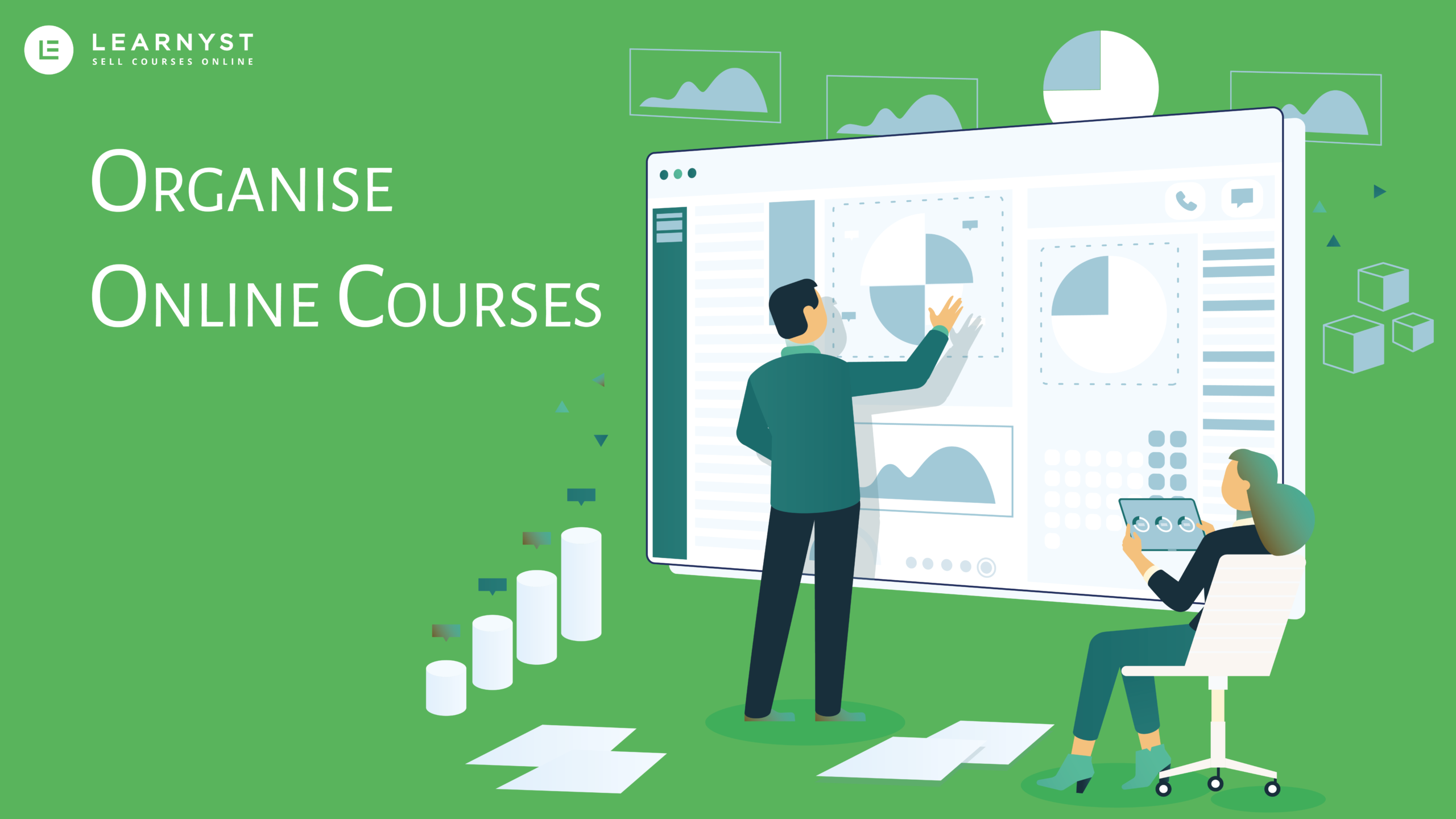How to organize online courses?
- March 27 2021
- Vaishak

This post answers one of the key questions asked by most newbie e-tutors – How to organize online courses? What does it take to run a successful online course? Let’s find out.
In the traditional classroom, the teacher embodies everything about the course to his/her students. As a teacher, you are supposed to welcome, explain the entire course structure, describe the content’s relevance, and answer any questions that students and prospective students may have.
When you take your teaching online, all of the previous activities will be mediated by technology. Therefore, how you choose to organize and label your course components have a significant impact on your student’s learning experience and your success as an online educator.
Before we understand how to organize online courses, let’s understand the dos and don’ts first.
Dos and don’ts while organizing online courses
Dos
- Collect the contact details of all your students and create a group for them
- Prepare adequately before every online class and be ready with any assignments you’d like to share with students.
- You can even ask one of your students to be a volunteer and help you with basic tasks like passing on important information.
- Give proper breaks so that students have the time to think about what you’ve taught till then and ask questions if needed.
- Please encourage students to help their peers out by answering their queries.
Don’ts
- Don’t be formal, especially if you are familiar with them
- Do not postpone or cancel classes unless you have a compelling reason
How to organize online courses?
Plan your classes
Addressing students through a screen and addressing them face to face is vastly different. For one, your online students would be from different parts of the world. Plan your course modules perfectly in advance to avoid any kind of surprises. Lay these out properly in the “Table of Content” section of the courses’ webpage. This can be a deal maker for you.
Take time to create an effective and logical order for the course content. Also, finalize the right mix of multimedia course content. For live classes, find a convenient time for most of your students and keep a backup schedule for students who miss your classes.
Finalize the right tech
Investing in the right tools and software is essential for giving a no-fuss learning experience to your students. There are comprehensive platforms like Learnyst that allow you to build and sell your courses without investing in multiple software and tools. You should do your fair share of research and finalize on a platform that can scale with your business. But you will still need to invest in the basics, including a computer, high-speed internet connection, a microphone, and a camera. If visuals play a crucial role in your online teaching, it might be worth considering investing in tablets with good camera. This could greatly enhance the quality of your video content and, subsequently, the overall learning experience
Related post: 10 teacher technology tools you didn’t know
Create the perfect environment
Working remotely is a challenge. You have to be extraordinarily self-disciplined and create the perfect environment to not only teach students but also to ideate and develop course content. Without this, the whole process would feel redundant. Plan things out – set up a separate space where you can work undisturbed. Keep this space inviting and friendly where you can spend hours one end without people barging in or getting distracted by outside noise. Even something as simple as a few indoor plants can lighten up the mood.
Innovate and make online discussion lively
Online classes can feel very mechanical if all your students must stare into the screen for the entirety of class. This happens because of poor planning. Classes should be more of a discussion than you dictating everything to the class. Actively engaging with students would go a long way in terms of how students feel in the class. Treat online classes exactly how you would treat offline classes. Assign reading materials, use digital whiteboards, take polls/surveys, conduct quizzes and encourage them to ask questions. Also, give an adequate number of assignments. Empower them to improve the course by means of constant feedback.
Communicate regularly
This is essential to help your students achieve their goals as well as for you to achieve your business goals. Online communication can help bring about a sense of belonging among you and your students. Not just that, it can also help you with marketing. Ensure your students are clear about the best methods to communicate with you and when they can do so. It can be frustrating for some students when there their professor is not physically present in front of them. Use forums, both course-wise and Discussion Forums, to make it easy for students to communicate and clarify things. Tend to their queries promptly and give as many instructions as required.
Focus on active learning
Most lecturers resort to long lectures in a traditional class setting. But even the most experienced teachers will have to change their ways if they want to succeed as an online educator. To better engage with students, it is vital to have a mix of discussions, collaborations, video/audio clips and hands-on exercises. “Lectures” won’t work in the online learning environment. What will work is an “active learning” environment facilitated by a blend of teaching and learning tools.
Motivate your students
Every student has their own pace at which they learn. Motivation plays a vital role in the learning process. While some students are self-motivated, you might have to give that extra push to those that are not. For each activity, you assign, keep strict deadlines. Your goal here should be to find ways to engage and motivate students as you would do in a traditional classroom.
Keep group sizes small.
In a physical classroom, some students don’t participate in discussions or ask questions because they are either shy or not engaged enough. It can be equally intimidating even during online classes when students know people are looking at their face on the screen. This is why it is wise to limit the number of participants to not more than 10 for discussions, collaborations and group activities.
Get constant feedback
Student feedback can help you design new courses and improve upon existing ones that will benefit students and deliver an effective learning experience. So, ask them how satisfied they are with your course. Do they feel in control and supported during the course? The course content is another topic you need to touch upon. Do they have clear expectations from you? Are they getting all the information they need? What challenges are they facing with assignments? These questions can give you constructive feedback that will help you improve your course.
How Learnyst can help?
Now that you know how to organize online courses, it is time to know an important tool that can help you run your online courses effectively. Introducing Learnyst, which is the go-to LMS platform for emerging and established online educators. By partnering with us, they have combinedly created and launched over 25,000 courses and earned over INR 350 Crores. Use our platform to create your own courses as you like. There are multiple templates for website design and course content that have been proven to work. Get in touch with us now!


Leave your thought here